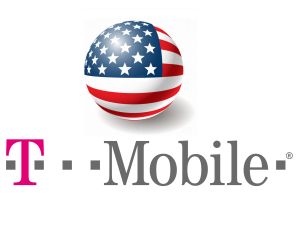AT&T To Aquire T-Mobile USA For $39bn

AT&T will become the US’ largest carrier if its $39 cash and stock deal to acquire T-Mobile USA is approved by regulators
AT&T on 20 March agreed to purchase T-Mobile USA from Deutsche Telekom AG, paying $39 billion (£24bn) in cash and stock for the struggling phone carrier to help accelerate its 4G LTE (long term evolution) network plans.
AT&T will pay Deutsche Telekom $25bn with the remainder to be paid in AT&T stock for T-Mobile in a deal both companies’ boards approve and expect to close in 12 months. Deutsche Telekom will take an 8 percent equity stake in AT&T, according to the deal terms.
Companies have GSM in common
The blockbuster deal makes sense on a number of levels, starting with the fact that both run GSM technology, an important characteristic for network compatibility.
T-Mobile has 33.7 million mobile subscribers, but finds itself struggling to compete with top carriers Verizon Wireless and AT&T, which serve 94.1 million and 95.5 million subscribers, respectively.
The buyout is a bailout for Deutsche Telekom’s wireless unit, but it would stand to make AT&T easily the largest US carrier if the deal passes regulatory muster and is consummated.
Perhaps more importantly, it would help AT&T ramp up its 4G LTE network plans, which have yet to come to fruition at a time when Verizon, Sprint and T-Mobile all hitched their wagons to the speedy next-generation wireless technology.
While Sprint and T-Mobile beat both larger carriers to 4G, Verizon is now serving 4G in almost 40 US markets, with plans to reach more than 100 markets by the end of 2011. The carrier began selling its first 4G phone, the HTC Thunderbolt, on 17 March.
This made it crucial for AT&T to make a bold move to speed 4G LTE plans. T-Mobile can help AT&T expand 4G LTE deployment to 95 percent of the US population, ostensibly reaching an additional 46.5 million Americans. This includes coverage for rural communities and small towns.
“This transaction represents a major commitment to strengthen and expand critical infrastructure for our nation’s future,” said AT&T Chairman and chief executive Randall Stephenson in a statement. “It will improve network quality, and it will bring advanced LTE capabilities to more than 294 million people.”
Network density
“After evaluating strategic options for T-Mobile USA, I am confident that AT&T is the best partner for our customers, shareholders and the mobile broadband ecosystem,” Deutsche Telekom Chairman and chief executive René Obermann said in the statement.
Should the deal close, AT&T said it will gain cell sites equivalent to what would have taken as much as five years to build. The merger will also boost AT&T’s network density by 30 percent in some of its most populated areas.
While the deal should certainly help AT&T ramp up 4G LTE network development and deployment to handle the mobile traffic the combined companies’ 130 million-plus users will generate, less clear is what will happen to T-Mobile’s existing phone lineup.
T-Mobile produced the G1, the first Android smartphone in 2008, and has built several Android phones, including the myTouch 3G and 4G handsets, and the forthcoming T-Mobile Sidekick 4G.
Will AT&T tuck these phones into its portfolio, or scrap them? Will AT&T retain the majority of T-Mobile’s employees?
The news comes two days before the International CTIA Wireless 2011 show kicks off in Orlando, Florida, where Sprint is expected to unveil a slew of smartphone and tablet announcements.
AT&T President and chief executive Ralph de la Vega and T-Mobile USA chief executive Philipp Humm are participating in a keynote panel on 22 March.
